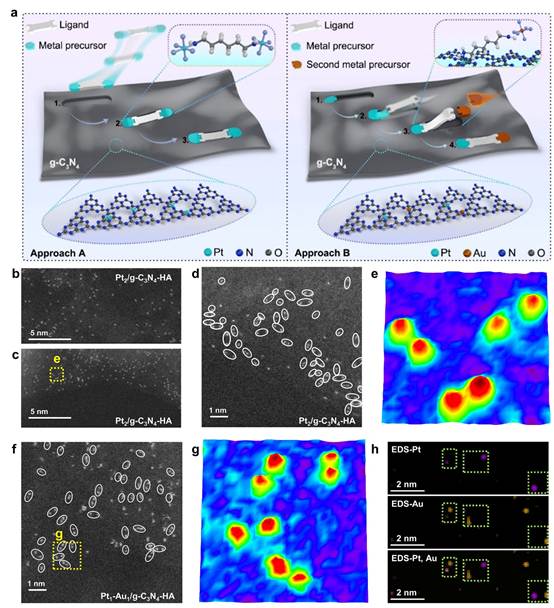Dual-atom catalysts (DACs) exhibit high catalytic activity and metal utilization, along side structural diversity with a wide range of catalytic site configurations. These features position DACs as promising candidates for energy conversion technologies. However, the precise control over atomic dispersion, pairing ratios and interatomic distances—which critically influence their multifunctional catalytic behavior—remains a formidable challenge.
Recently, Professor Jian Liu and Prof. Limin Wu from Inner Mongolia University, Prof. Bolong Huang from City University of Hong Kong published a significant research article titled “ligand-restricted synthesis of highly paired dual-atom catalysts”, proposing a novel strategy for achieving highly paired homo- and heteronuclear DACs with controllable distances

Linear 1,6-hexanediamine (HA) was used as the ligand with two amine groups to coordinate the two metal precursors. For homonuclear DACs, one HA molecule could restrict two Pt atoms by forming two Pt-amine complex end groups via dechlorination, then adsorbed on the 2D g-C3N4 support. For heteronuclear DACs, Pt single atoms are first fixed on the g-C3N4 surface by Pt-N electrostatic interaction. After the HA ligand was added, one end amine coordinates with Pt with lower adsorption and electron transfer, and the other end amino group of HA then traps free Au via dechlorination, finally forming Pt-Au heteronuclear DACs. Benefitting from the efficient electrostatic coordination interaction between metal atoms and the nucleophilic nitrogen atoms of diamine ligands and 2D supports, the DACs can reach more than 82% of the pairing ratio, significantly outperforming those of the previously reported DACs. As a model system, the highly paired Pt1-Au1/g-C3N4-HA exhibited around three times the catalytic activity (744 mg h−1 mgmetal−1) in NO3−RR compared with the unpaired Pt1-Au1/g-C3N4-none (255 mg h−1 mgmetal−1) due to the high-quality two-site synergistic catalysis. This strategy can be extended to prepare various homo- and heteronuclear Pt-Au based DACs with precise and efficient control of metal atomic distance, offering both accessibility and practicality for advanced catalytic applications.
The research article was published in Nature Materials ( Nat. Mater. https://www.nature.com/articles/s41563-025-02385-6) financially supported by the National Key Research and Development Program and the National Natural Science Foundation of China.